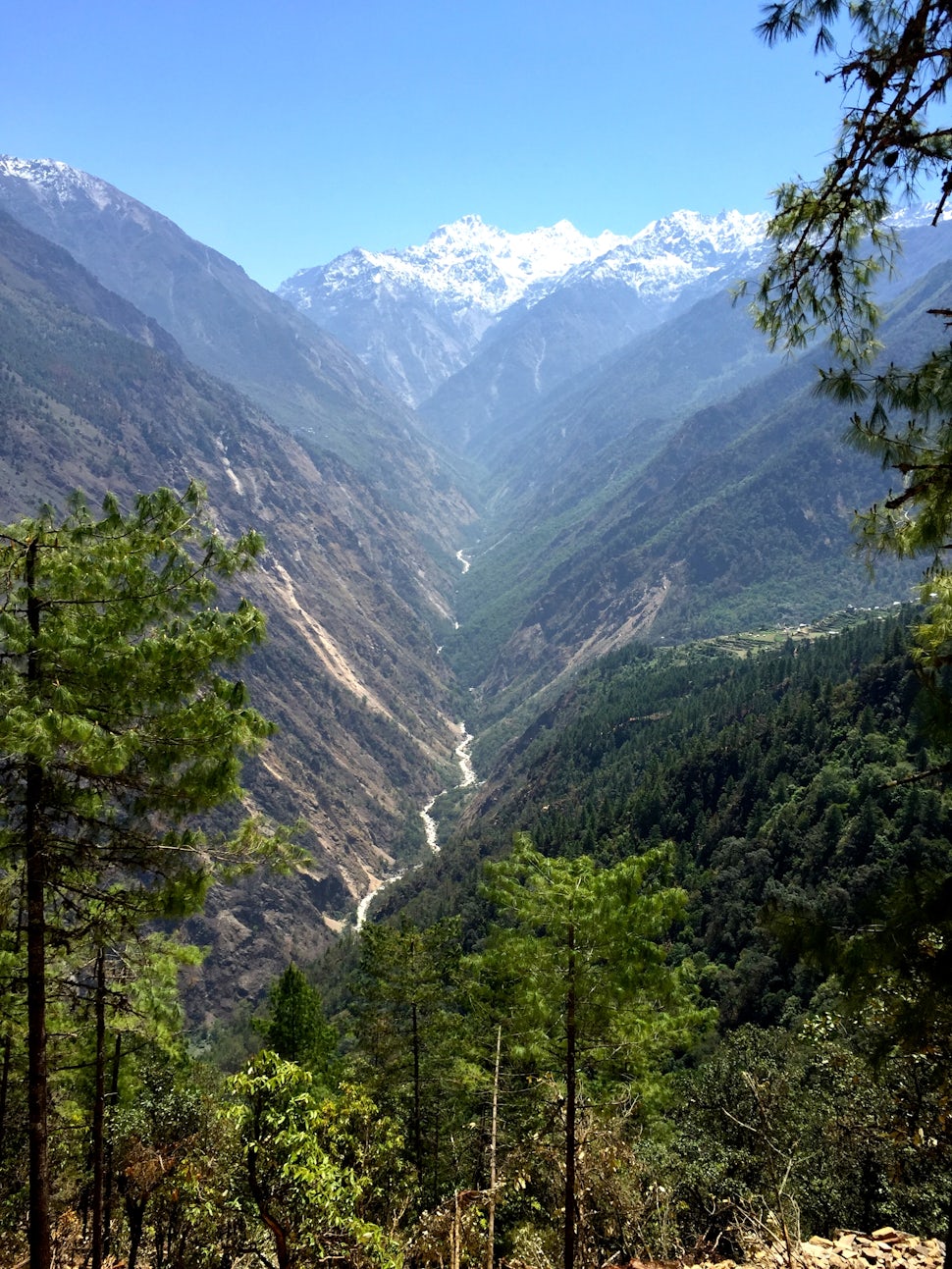Travel with Purpose: Why You Should Trek Through Langtang Valley This Fall
One epic adventure for one great cause.

Nepal is the gateway to the Himalayas, home of the tallest mountains in the world. For decades the country has attracted global attention for its magnificent beauty, rich culture, and welcoming communities. However, the last year has cast a different type of spotlight on this third-world country that encourages foreigners to visit for new reasons.
The earthquake that devastated Nepal in April of 2015 did more than just take lives and damage buildings; it ruined the tourism industry in many remote village who depend on foreign visitors to maintain their livelihood. The Langtang Valley experienced some of the worst of this impact because of its position between two skyrocketing mountain ranges, and what was once one of the top destinations in the country, quickly became one of the least visited. Nepal isn’t looking for volunteers or Peace Corps members; they need your business as a trekker.
 Rockfall plummeted down both sides of the valley during the earthquake, leaving many buildings irreparable and eventually abandoned.
Rockfall plummeted down both sides of the valley during the earthquake, leaving many buildings irreparable and eventually abandoned.Nepal’s most popular trekking season is from September through December, when the temperature is moderate, precipitation is minimal, and the views are crystal-clear. Here’s why you should pack your bags and plan a trip to the high hills this fall.
Nepal is one of the world’s top destinations for epic trekking. That’s because…
- Accessibility: Most of Nepal’s trails are easily accessed, and more importantly, they’re friendly to both beginner and experienced hikers. Visitors have the opportunity to shorten or lengthen their trek based on their personal skill and preference.
- Affordability: Nepal is notoriously shoestring-budget-friendly, in that its lodging, food, and recreation prices are some of the lowest in the world. Plus, you can hire a local guide to escort you during your trek for just $10-20 per day.
- Beauty: Nepal is the best way to discover and explore the earth’s highest peaks, while experiencing an incredibly vibrant and unique culture. It’s truly the best of both worlds.
 Rebuilding and construction work begins before dawn and ends after dusk, through rain or shine.
Rebuilding and construction work begins before dawn and ends after dusk, through rain or shine.The Langtang Valley offers an unparalleled glacial valley experience. You’ll want to see Langtang for its…
- Proximity: The Langtang Valley is the closest trekking region to Kathmandu, reachable by public bus in five hours, or by a private car in half that time. Villages are close to one another, so you’ll never go long without finding a restaurant or lodge for eating or sleeping.
- Flexibility: Unlike the difficult-to-reach Annapurna and Khumbu regions, Langtang treks can be completed in as little as 3 to 5 days for travelers with a short time limit.
- A Community in Need: The Langtang region is open for business, but much of the outside world doesn’t know this yet. Earlier this year gaps of communication left Kathmandu city-goers with the impression that the entire valley was still under construction – but in truth, they’ve been open all along. Lodge owners are desperate for the tourism they’ve built their livelihoods on, and they need your business now more than ever.
 Engraved with the names of the valley's earthquake victims, this memorial stone marks where the small village of Langtang once was.
Engraved with the names of the valley's earthquake victims, this memorial stone marks where the small village of Langtang once was.How you can help…
- Hire Local Guides: From the hustle and bustle of Kathmandu to the smallest villages perched beneath a mountain pass, there are always local guides ready and willing to assist you with your journey. For a small price, you’ll get advice, direction, and support from a person who knows the trails best.
- Take the Road Less Traveled: Western culture teaches us to stick with the crowds – but in Nepal, it’s better to visit the less-populated establishments. Eat at an empty restaurant, or purchase goods from the shop nobody is going to. You could be the only customer a diner receives all day; and you will be thanked and remembered for that.
- Give: Spend your money and time with lodge owners, buy an extra cup of tea or one of the pieces of jewelry that your host mother is selling. Nepal is by and far more inexpensive than your life back home; you can afford to treat yourself.
 Cherko Ri looms over Kyanjin Gompa
Cherko Ri looms over Kyanjin GompaThe April 2015 earthquake was devastating, no doubt, but one of the most important takeaways I’ve seen firsthand is the resilience and genuine happiness the Nepalese have in the face of tragedy. Lodge owners, construction workers, and even students band together to rebuild their communities and livelihoods. It’s the people – not the mountains – that keep recurring visitors coming back, and who make this country one of the top destinations for tourists worldwide.
Go and see for yourself.
We want to acknowledge and thank the past, present, and future generations of all Native Nations and Indigenous Peoples whose ancestral lands we travel, explore, and play on. Always practice Leave No Trace ethics on your adventures and follow local regulations. Please explore responsibly!
Do you love the outdoors?
Yep, us too. That's why we send you the best local adventures, stories, and expert advice, right to your inbox.







